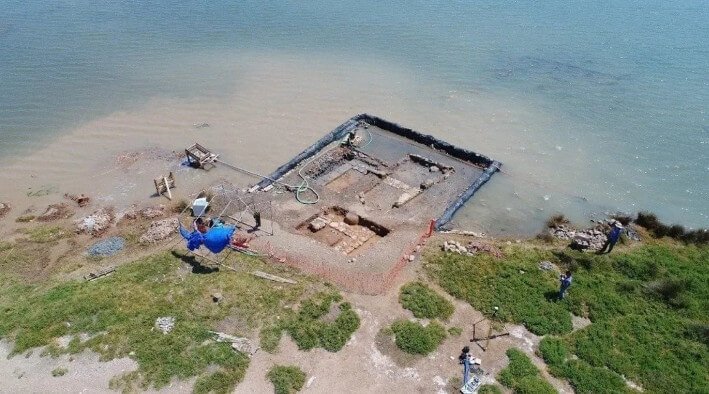The submerged remains of an ancient stoa complex, a significant public structure from classical times, have been uncovered off the east coast of Salamis, Greece, by a team of marine archaeologists. This notable find was made in the waters of Ampelakia Bay and has been publicized by the Greek Ministry of Culture.
The discovery of the stoa is part of a comprehensive three-year investigation conducted on the island's eastern shores in the Ambelaki-Knosoura marine area. This collaborative effort involved the Institute of Marine Archaeological Research, the Ephorate of Marine Antiquities, and the University of Ioannina. The research builds on previous findings in the area, which include sections of a sunken sea wall and ruins of public buildings.
The unearthed stoa, characterized by its narrow and elongated form, stretches at least 32 meters in length and 6 meters in width. Within the structure, several rooms have been identified, one of which was thoroughly investigated, revealing large storage pits and robust walls constructed from sizeable hewn stone blocks.
Greek Ministry of Culture and Sports
This structure, traditionally used as a sheltered walkway or promenade in ancient Greece, typically featured a walled back and a front colonnade. Stoas not only provided space for civil activities and commerce but also housed public art and monuments and were integral to religious practices and the definition of public spaces.
The excavation team has recovered various objects from the site, including ceramics dating back to the classical and Hellenistic periods, amphora stoppers, marble fragments, and 22 bronze coins. Among the marble artifacts, two notable 4th-century BC items stand out: an inscribed column and a stele with the muscular right hand of a large statue, similar to one in Salamis’ Archaeological Museum.
Greek Ministry of Culture and Sports
The stoa's orientation and architectural features suggest it marked the eastern edge of the city's Agora, the central public area of the classical-helistic city. This contrasts with earlier assumptions that it might have been associated with the port area.
This stoa complex's identification adds a significant piece to the puzzle of Salamis' ancient topography and urban organization. Notably, the ruins of this structure were recorded by the ancient traveler Pausanias in the 2nd century.
This project represents the first interdisciplinary underwater research initiative intensively pursued by Greek institutions in the historic strait's areas since 2016, revealing yet another layer of the rich historical tapestry of Greece.









